Circa 1910
Dimensions
Height 58 cm
Width 30 cm
Depth 22 cm
This bust depicts a young woman in ancient costume, inspired by the feminine representations of the Roman city of Pompeii, frozen in time by the eruption of Vesuvius in 79 AD.
The work embodies the ancient ideal reinterpreted through the prism of Art Nouveau.
The headdress and earrings suggest an archaeological stylization blended with elements of 1900s fashion.
The face is sculpted with extreme delicacy, with a soft gaze, harmonious features, and closed lips in a meditative expression.
The bust, wrapped in an expertly crafted drape, is mounted on a plinth crafted like an ancient architectural fragment.
The inscription "Pompeii" engraved on the base anchors the work in an idealized archaeological imagery, common in decorative art at the turn of the century.
The late 19th century saw a renewed interest in Greco-Roman antiquity, rekindled by the excavations of Pompeii and Herculaneum. Many artists drew inspiration from this to create works in which ancient history became a pretext for feminine beauty and decorative exoticism.
Loli's work perfectly illustrates this taste, a reinvented classicism, imbued with refinement and archaeological reverie.
Biography Isidore LOLI (1875-1929)
Isidore Loli, born in Milan in 1875 and active in Paris until his death in 1929, was a sculptor of Italian origin trained in the academic tradition. Regularly exhibited at the Salon des Artistes Français, Loli distinguished himself with a production of refined female busts, combining neoclassical rigor and romantic sensuality. His mastery of Carrara marble and his sense of staging made him one of the most sought-after ornamental sculptors of the Belle Époque.




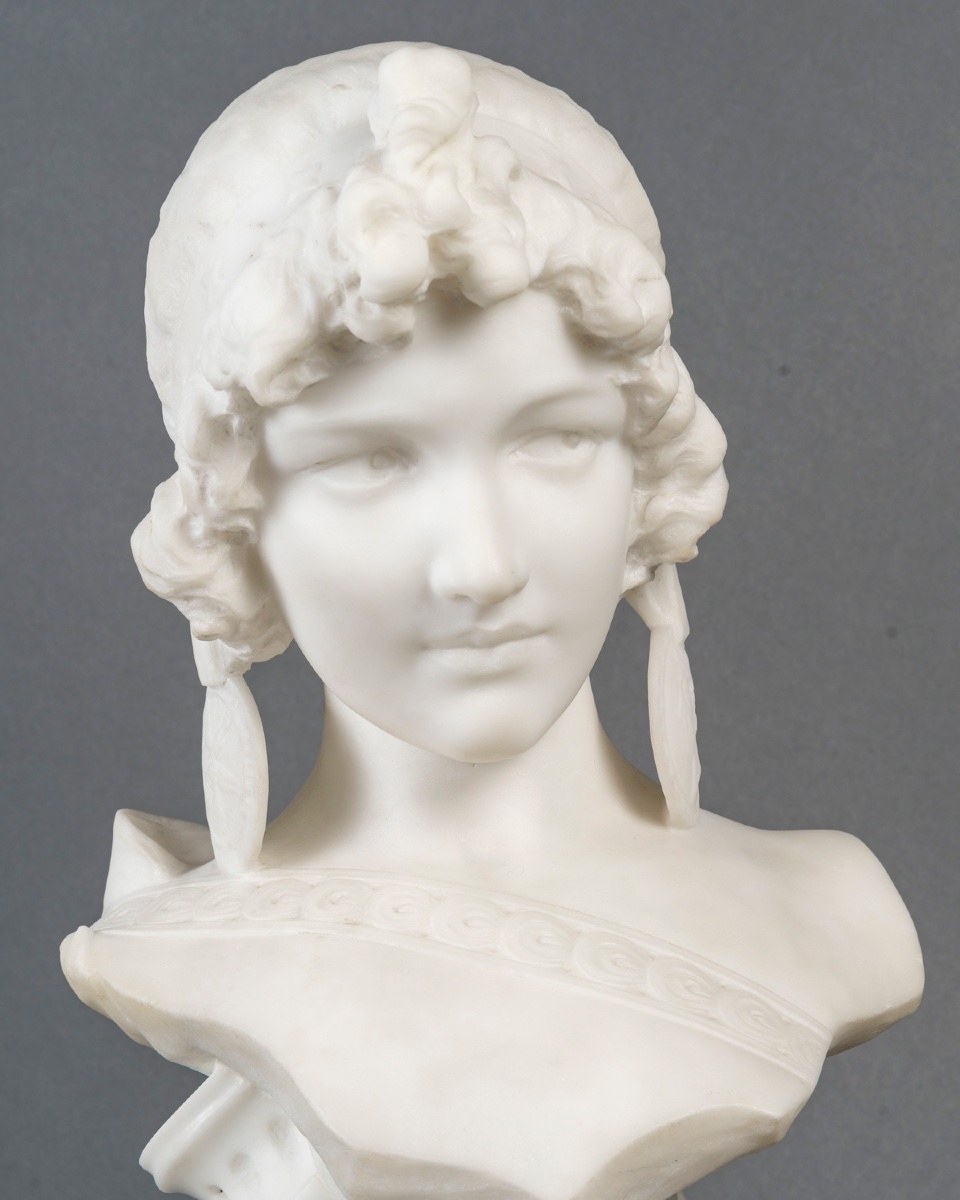
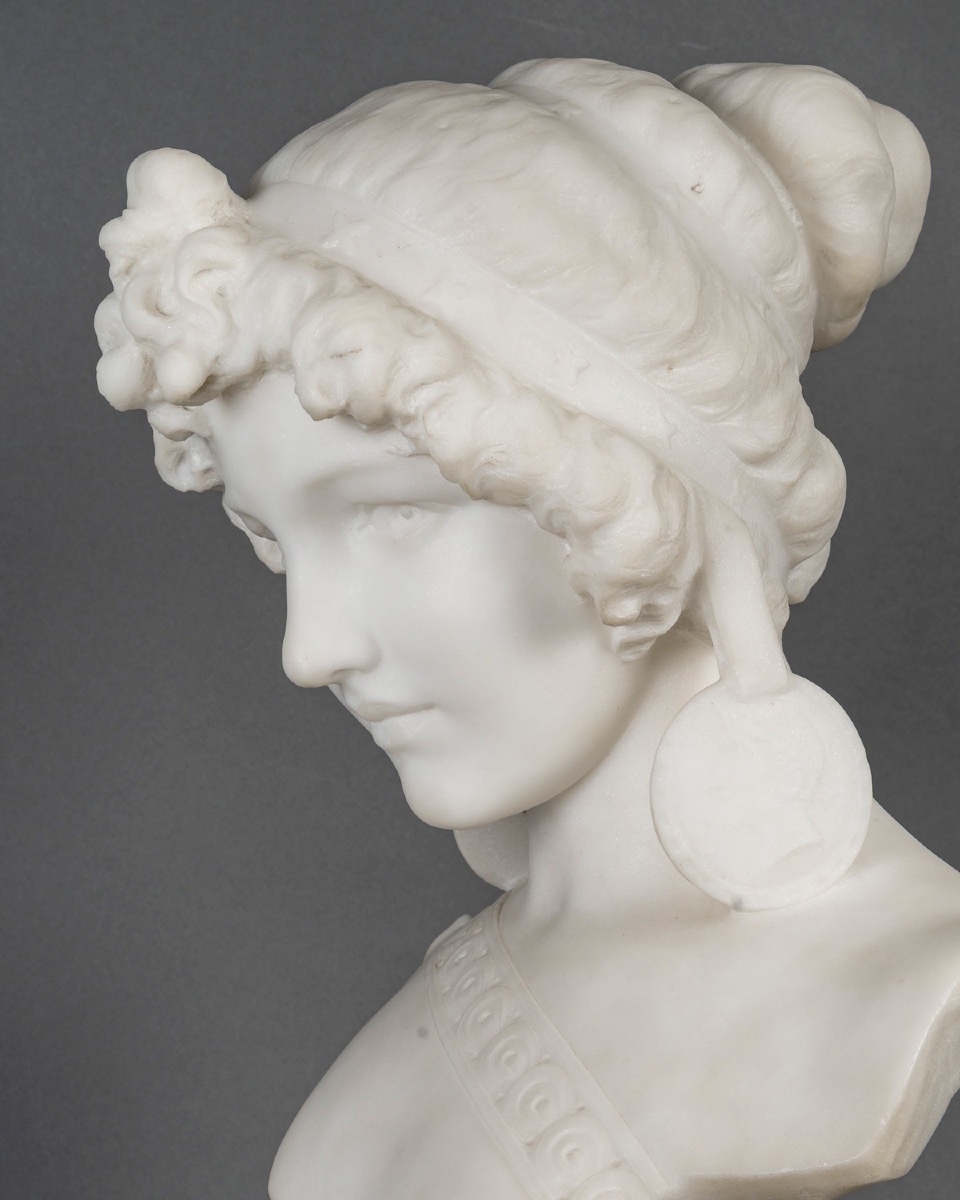
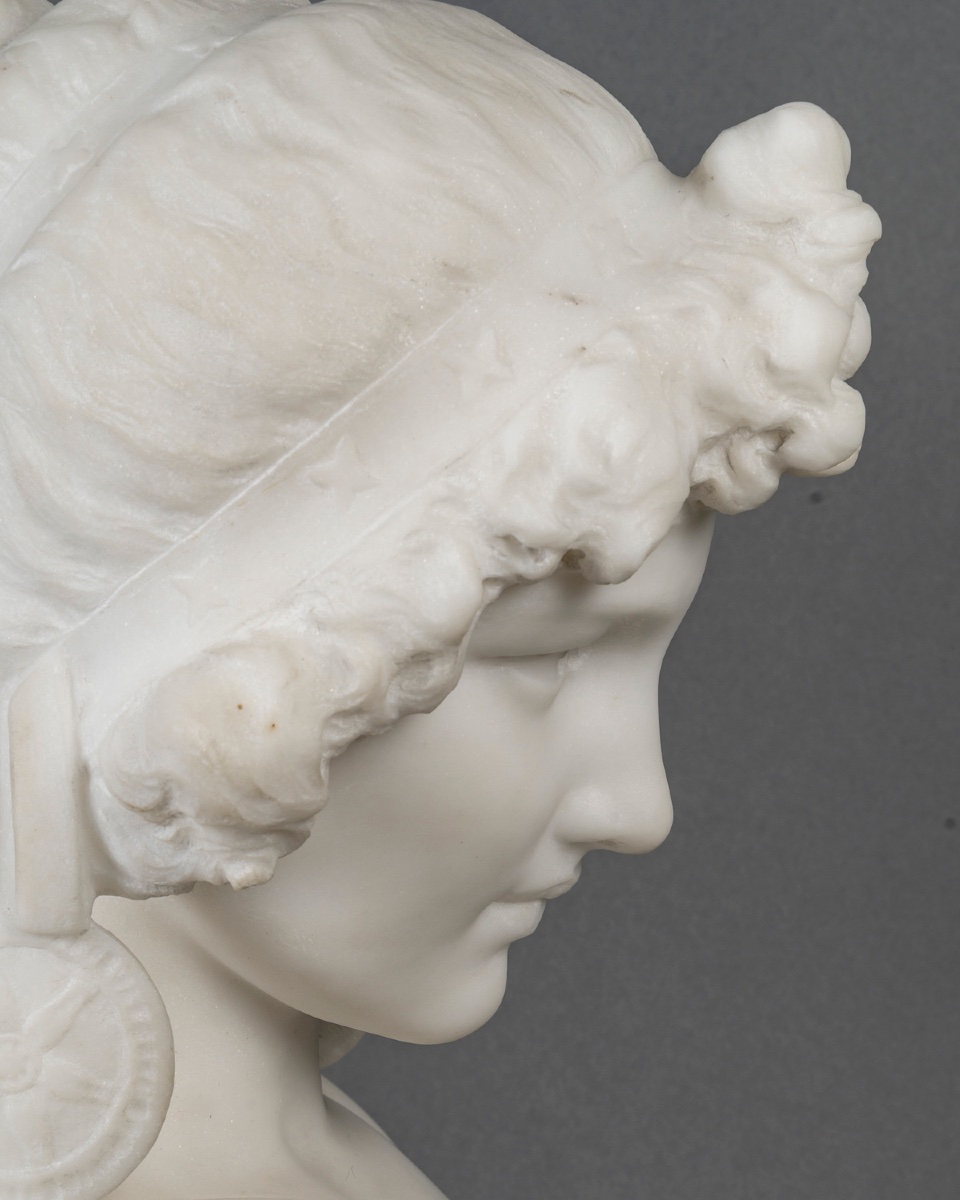
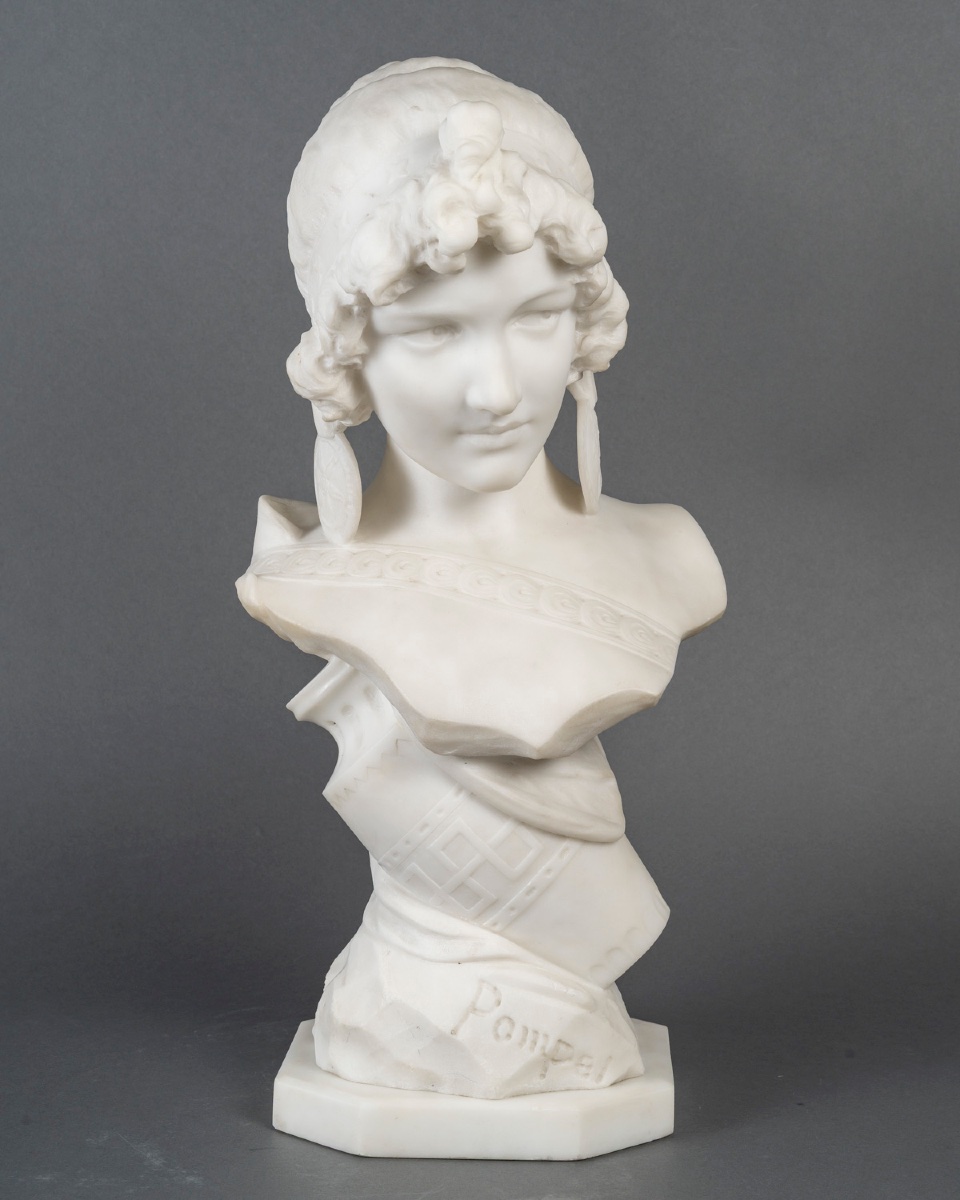
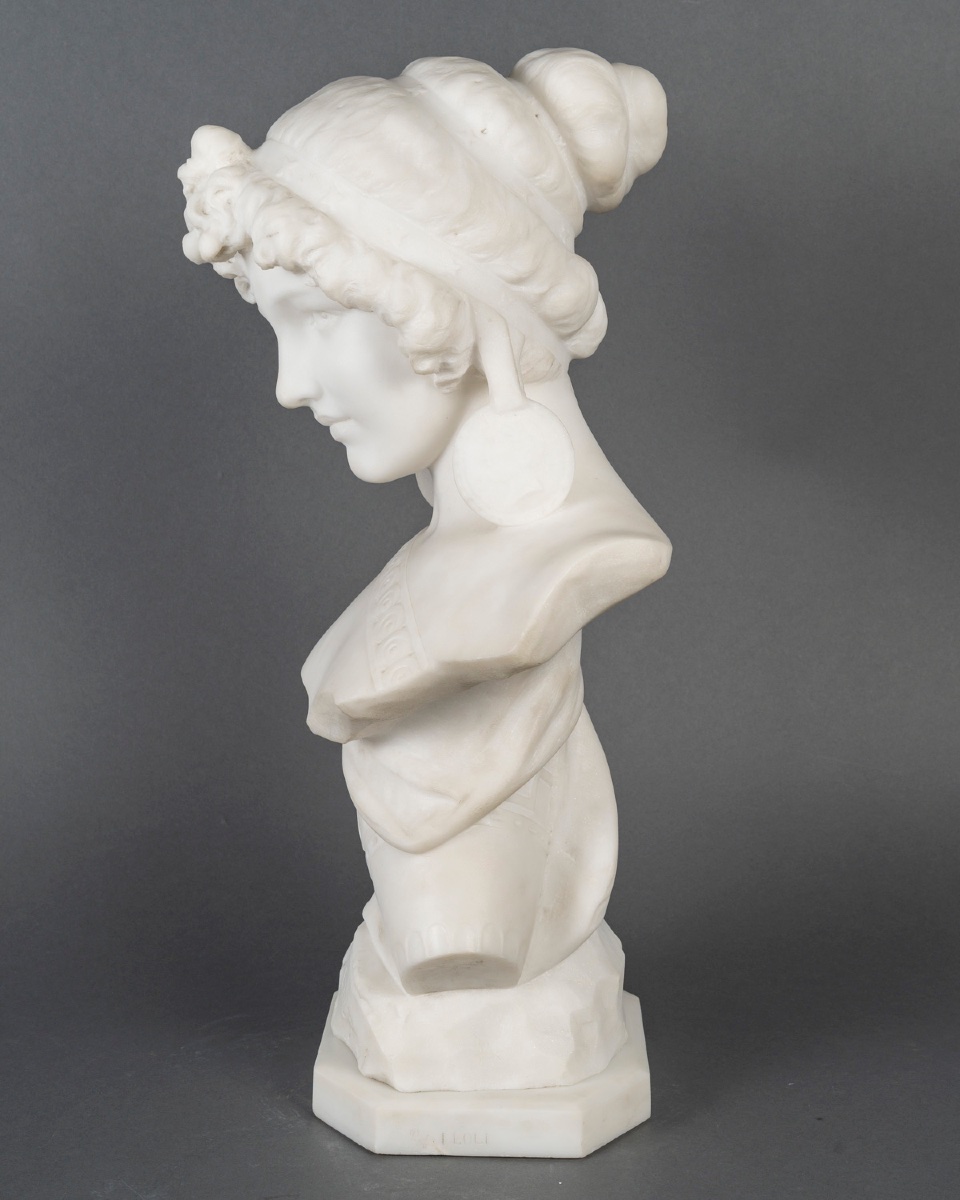
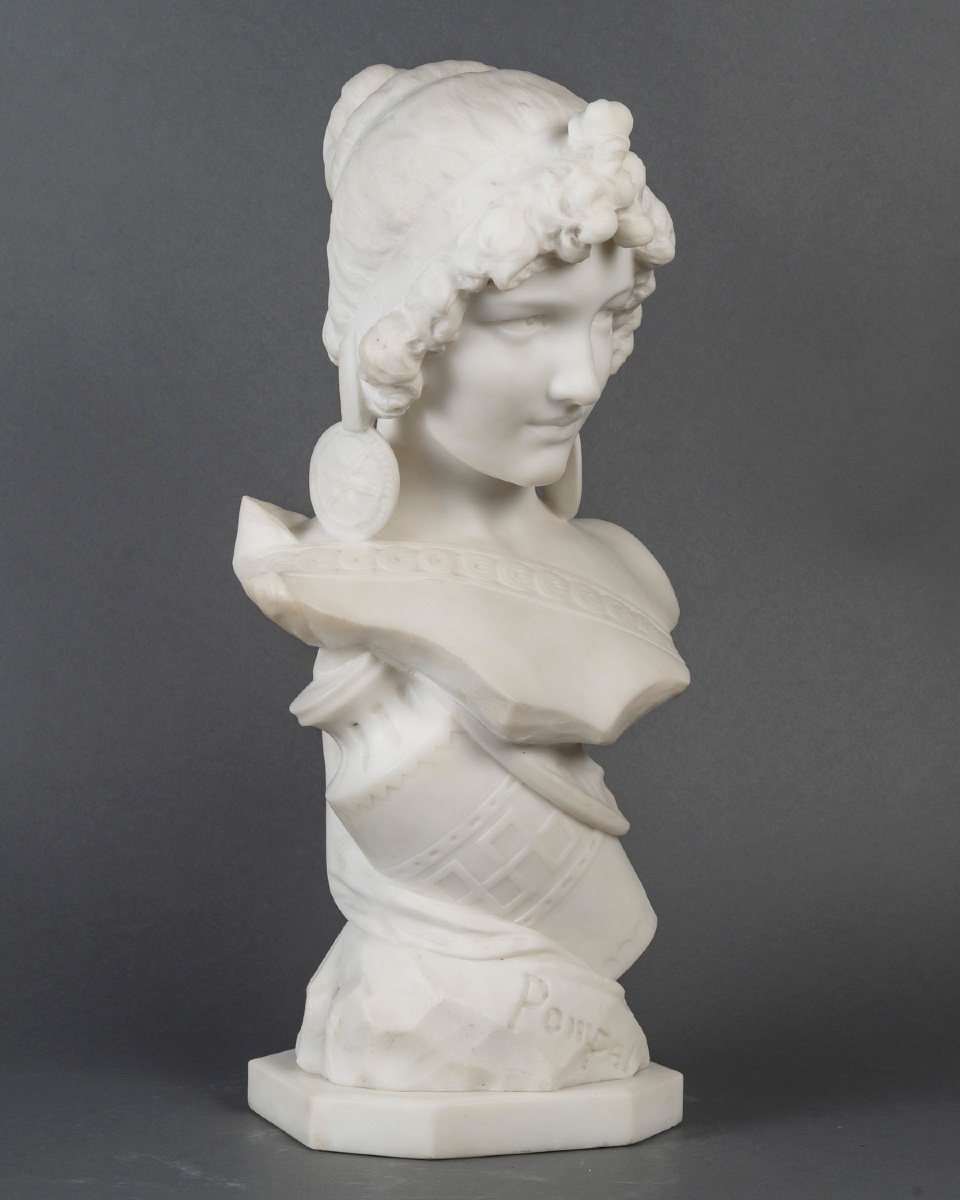
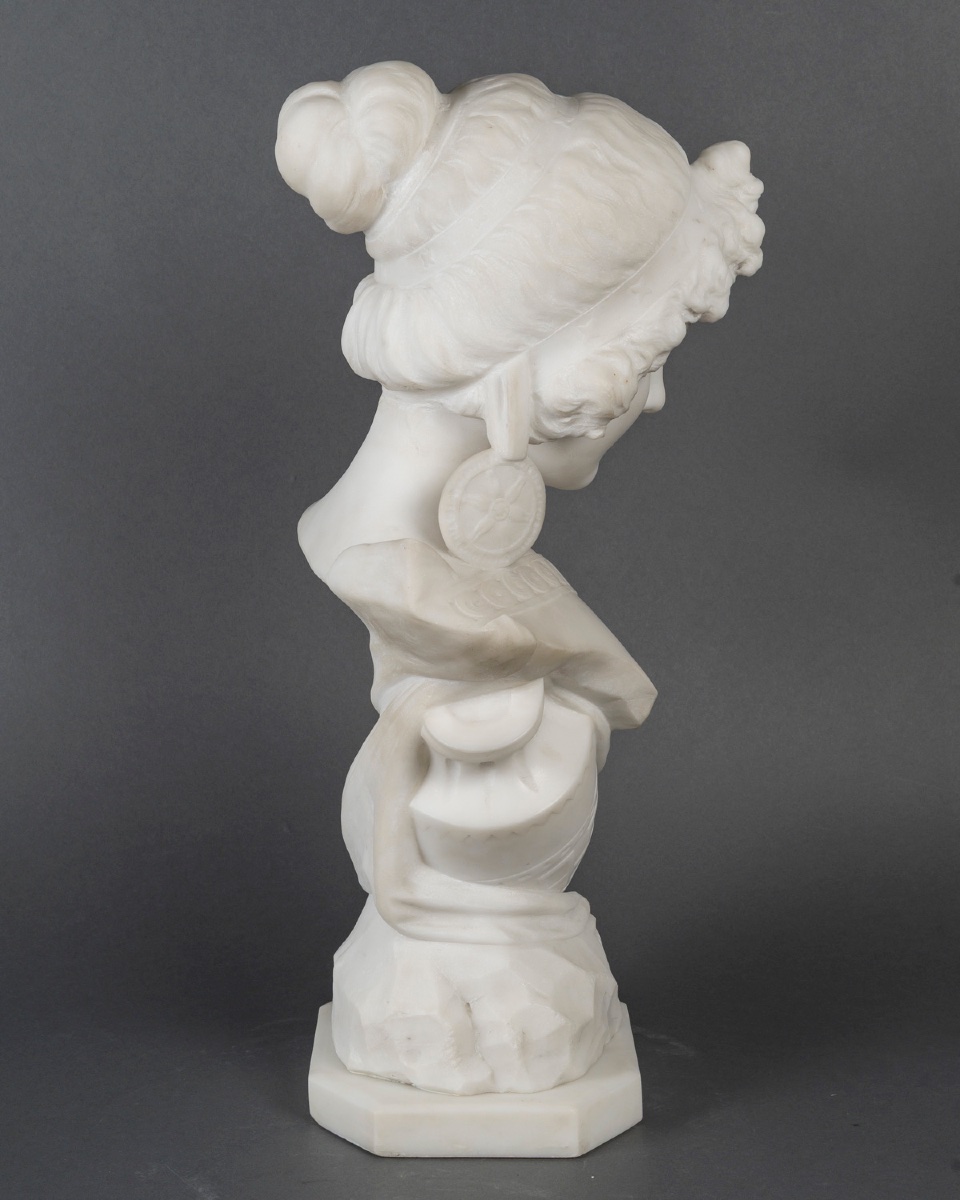
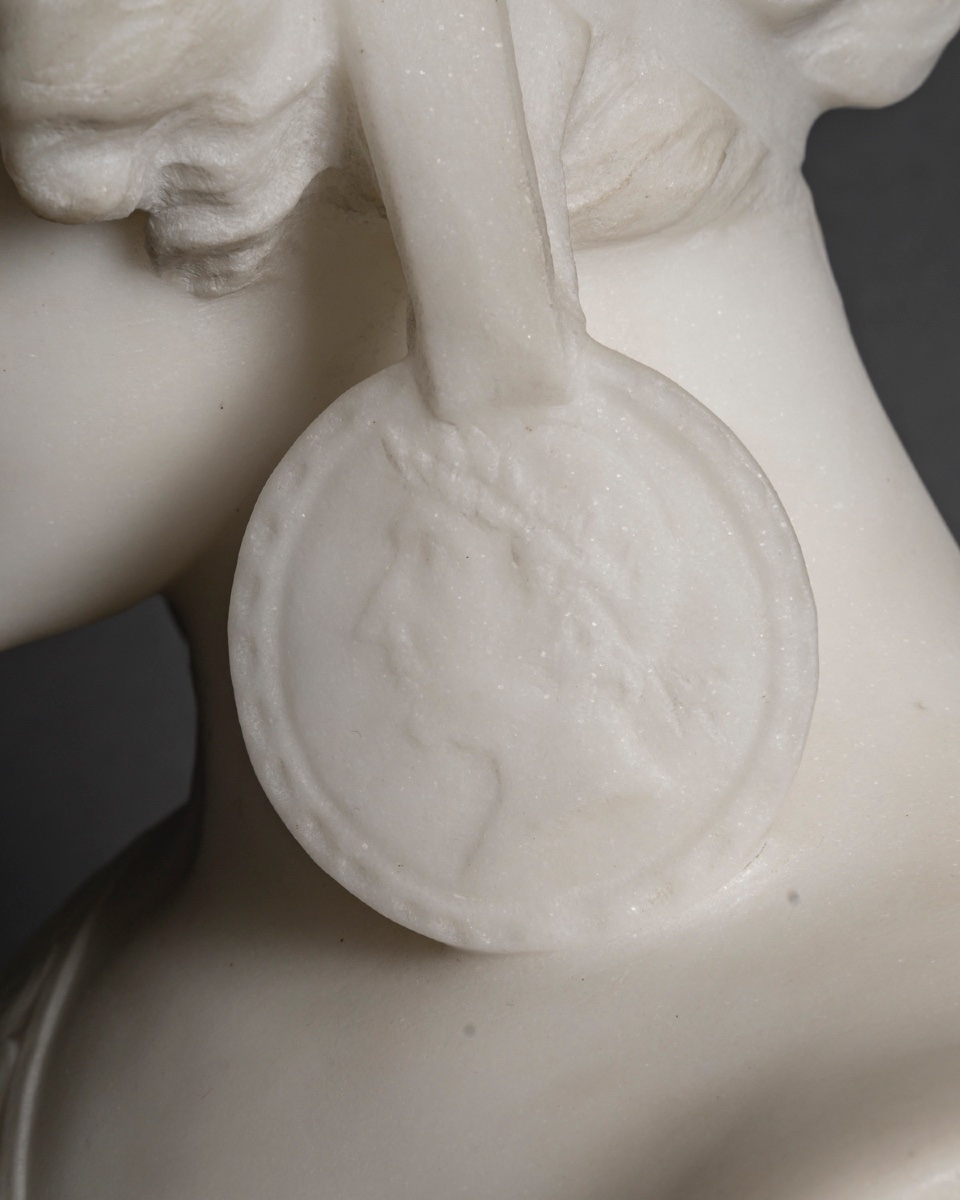
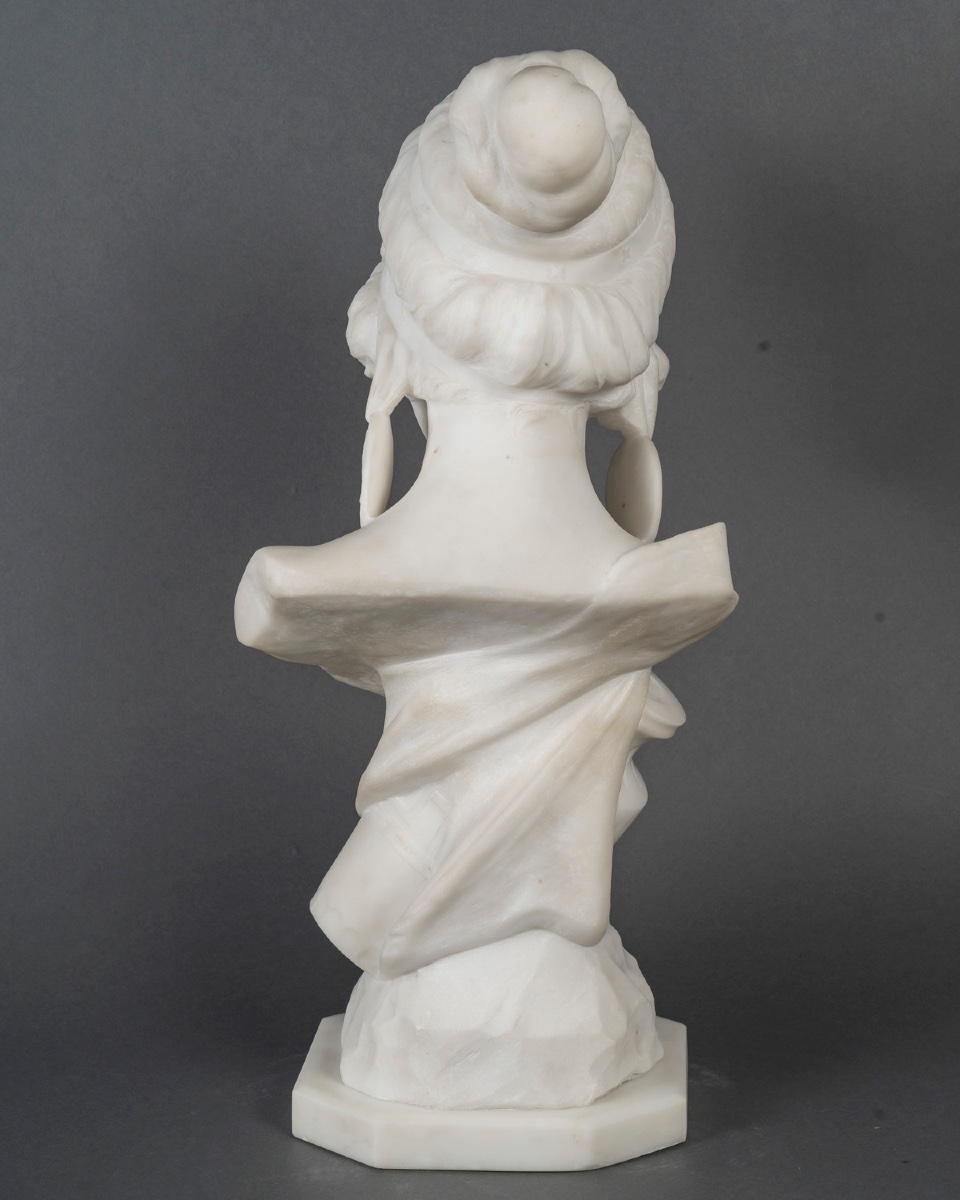
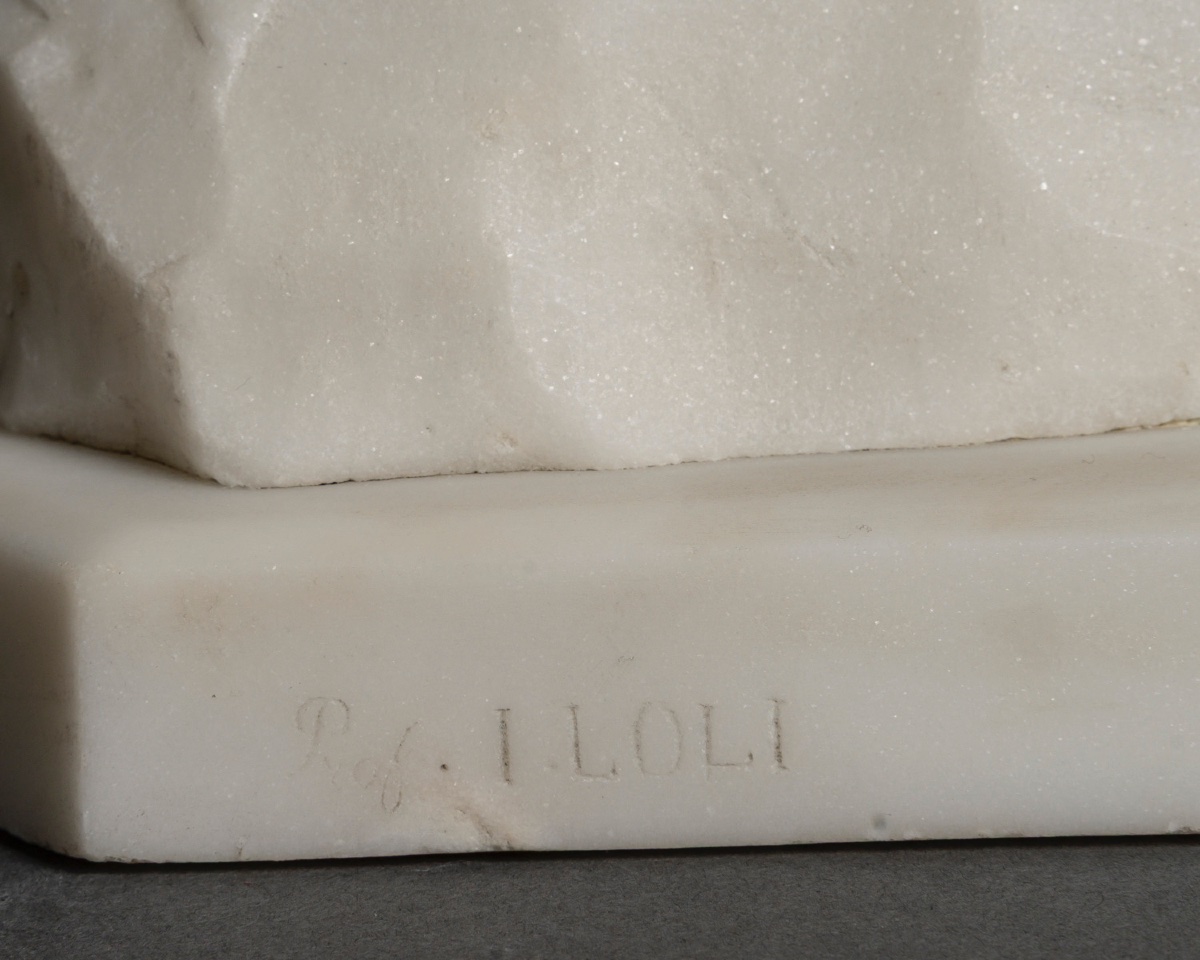
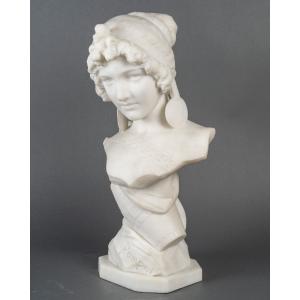

























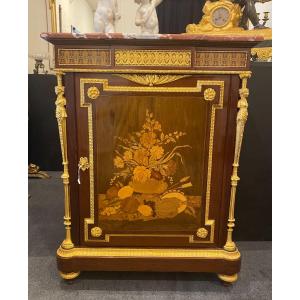



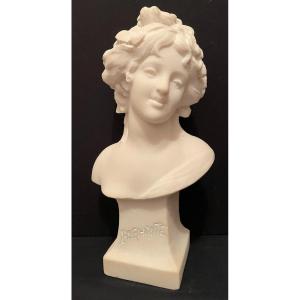




 Le Magazine de PROANTIC
Le Magazine de PROANTIC TRÉSORS Magazine
TRÉSORS Magazine Rivista Artiquariato
Rivista Artiquariato